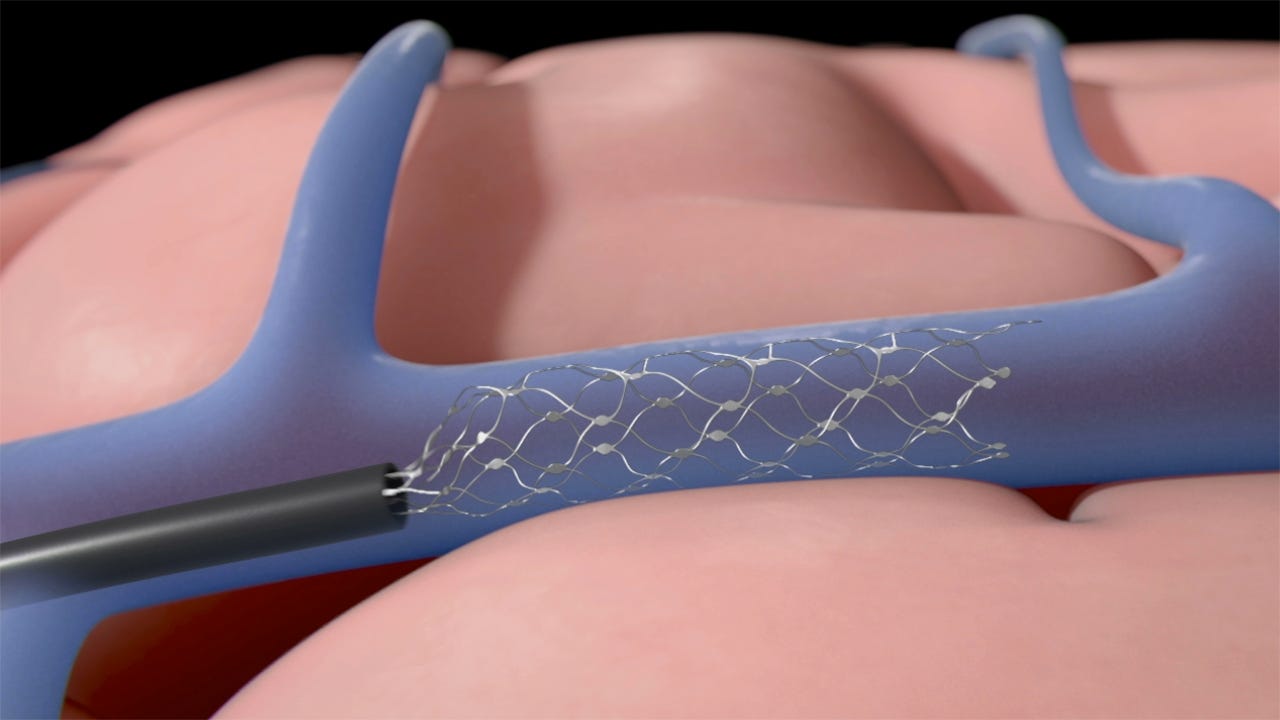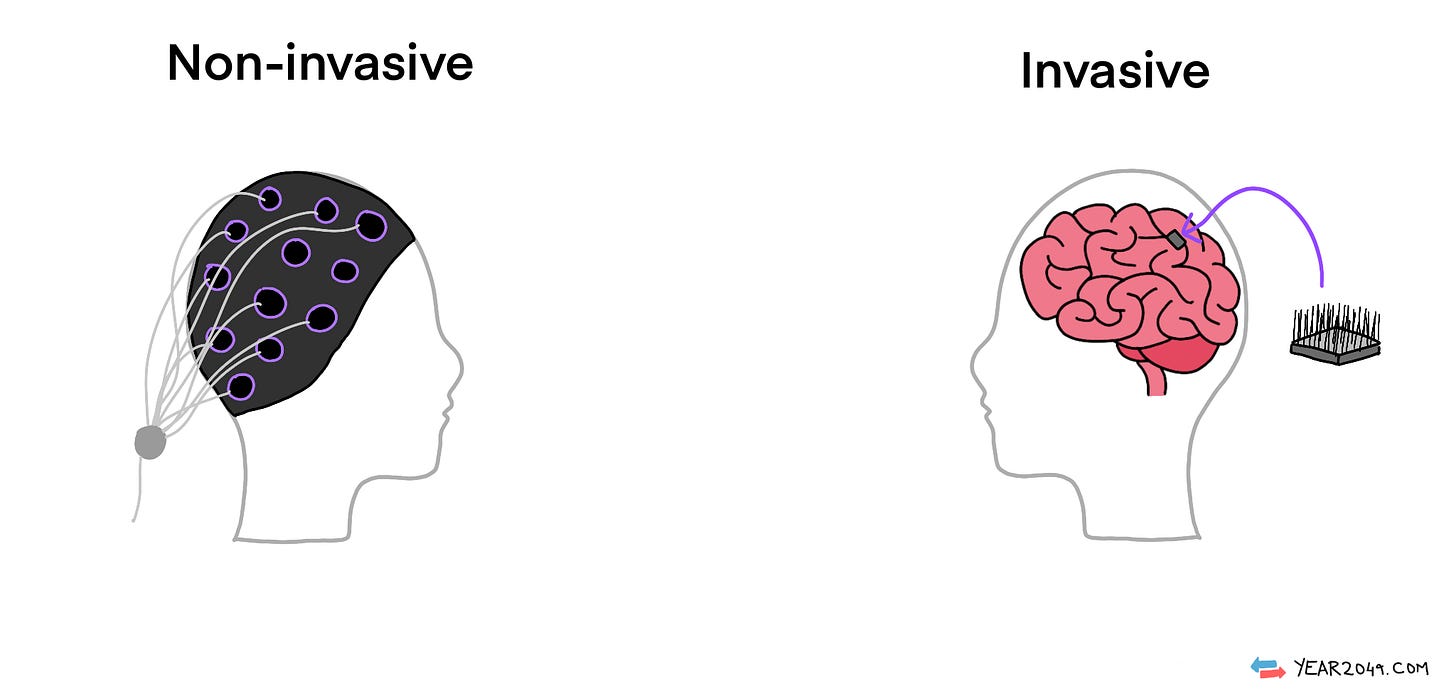Year 2049 is the newsletter for people who want to learn about the technologies shaping our future across all aspects of life.
Subscribe for free to get a new story in your inbox every two weeks on Friday.
Hello friends 👋
Read along to learn everything you need to know about BCIs, their applications, and the company that made big headlines this week (it’s not Neuralink 😉).
– Fawzi
By the way, my friends Ollie and Colin at The Triple Bottom write a fantastic weekly newsletter focused on sustainability. If you’re curious, you can check out their latest stories and subscribe here. Check out one of their recent stories at the bottom of this edition.
Today’s Edition
Comic: The mental remote
Story: Brain-Computer Interfaces
Extra: CMA CGM orders methanol-powered containerships
Comic
The mental remote
Brain-Computer Interfaces
The misunderstood organ

It was first believed that the heart, not the brain, was the house of thought and soul.
The Book of the Dead in Ancient Egypt even states the importance of preserving the heart of a mummy and removing its brain. At the time, the heart was considered the most important human organ, while the brain was insignificant and unnecessary in the afterlife.
It was the Roman physician Galen, in the 1st century A.D., who first concluded that the brain played a central role in our cognition and action after observing the impact of brain injuries on his patients.
Although the heart still preserves its metaphorical status of being the center of emotion, we now know that the brain is where all the magic happens. And we’ve reached a stage where we can record its electrical signals and translate them into intended actions, without using our muscles.
Hans Berger was the first to develop a device to record the brain’s electrical activity in 1924, but it was Jacques Vidal who first proposed the idea of brain-computer interfaces in his 1973 paper “Towards Direct Brain-Computer Communications”.
Vidal, a computer scientist at UCLA, asked himself:
Can these observable electrical brain signals be put to work as carriers of information in man-computer communications or for the purpose of controlling such external apparatus as prosthetic devices or spaceships? Even on the sole basis of the present states of the art of computer science and neurophysiology one may suggest that such a feat is potentially around the corner.
He wasn’t wrong.
How BCIs work
A brain-computer interface is a system that translates brain activity into desired actions on an external device, bypassing the middle steps of using our muscles to complete those actions.
The 4 steps from Brain → Computer → Interface:
Reading the brain’s signals and translating them into actions can be broken down into four steps:
Recording brain signals using electrodes on the scalp, on the brain’s surface, or inside the brain. These signals are amplified and digitized for further processing.
Processing digital signals to identify which patterns or oscillations are the result of an intended action by the user, and not irrelevant signals. Think about this step as cleaning up the signals and removing any unwanted “noise”.
Translating signals into commands using a feature translation algorithm. For example, a power variation in a certain frequency band could be translated into an upward movement of a computer mouse.
Sending commands to the output device such as moving a cursor, selecting a letter, or moving a robotic arm. I discuss more specific applications further below.
The 2 types of BCIs
BCIs fall under two major categories:
Non-invasive → a device (headset, cap, or headband) records brain signals from the scalp, which requires no surgery. This method of signal recording is known as EEG (electroencephalography).
Invasive → electrodes are implanted on the brain’s surface, which requires surgery. This method of signal recording is known as ECoG (electrocorticography). A more invasive approach involves implanting electrodes within the brain.
Each approach has its pros and cons:
The non-invasive approach is safer and cheaper, but the recorded brain signals are weakened because they travel through the brain, skull, scalp, and hair before they reach the electrodes.
The invasive approach requires a craniotomy since the electrodes need to be placed on the surface of the brain. This results in stronger and more accurate readings of brain signals, but there are concerns about long-term stability, tissue damage, and inflammation.
Synchron’s alternative approach to BCIs

Synchron, a startup founded in 2016, developed an endovascular brain-computer interface, the Stentrode™, which records brain signals from within the blood vessels, rather than the scalp (EEG) or the brain’s surface (ECoG).
This way, the electrodes can record strong and accurate signals from inside the brain, without requiring an open-brain surgery.
The surgery required is minor and would be similar to inserting a pacemaker, describes Synchron CEO Thomas Foxley. Once inserted, the Stentrode™ attaches itself to the walls of the blood vessels in the motor cortex. It never touches the brain.
Check the Deep Dive section at the end for a 2-minute video explanation of the procedure.
Synchron’s BCI has three main components that work together:
The node: the stentrode™ + an internal receiver/transmitter that is placed in the chest under the skin, which records brain signals.
The axon: receives raw brain signals from the node, and then processes and translates them into commands.
The platform: Synchron’s software, brain.io™, is installed on an external device and executes the commands sent by the axon.
Synchron made headlines this week after it became the first company to implant a BCI in a human in the United States (Businesswire), although they’ve previously implanted their BCI in two ALS patients in Australia back in 2020.
This is part of a trial to assess the safety and efficacy of a permanently implanted BCI on a severely paralyzed patient and is the first FDA-approved clinical trial of its kind. The trial will be focused on activities such as texting, emailing, and shopping online.
But in the long term, Synchron and other BCI companies hope to apply their technology to more complex situations and tasks.
The applications of BCIs

BCIs have been a major topic of interest to help people with severe physical disabilities, and many of its potential applications aim to help people with different conditions and needs:
Communication: The most basic and common application of BCIs is to help people communicate by using spelling programs to text, email, or post on social media.
Prosthetics: Another highly desired application is the control of prosthetics. The challenge is having to process and translate signals into commands since the level of complexity is much higher than moving a cursor in a 2D space. But a recent study involving non-invasive EEG showed some promising results.
Smart appliances: Controlling the room temperature, turning off the lights, or flipping through the TV using only your brain can help those with severe disabilities feel more independent and in control, as demonstrated in a previous study. This particular application may be accelerated with the help of Matter, the new IoT standard that will connect devices from different brands, since it may simplify the integration of the BCI with the entire smart home. Read my piece about Matter here.
Smart wheelchairs: Using the brain to move yourself when you’re physically unable to would be a huge leap. Several research groups have been developing BCI-driven wheelchairs to restore people’s mobility.
Neurorehabilitation: BCIs can be used as a therapeutic tool to help people relearn motor function after certain trauma or diseases.
There are also some non-medical applications worth mentioning:
Gaming: BCIs can create an additional layer of immersion in video games, especially in VR. You may recall that Meta acquired CTRL-Labs, a brain-computing startup, back in 2019 (which was 2 years before their whole metaverse rebrand/refocus). It’s not hard to imagine them adding non-invasive EEG to some Oculus VR headsets.
Neuromarketing: Using BCI to gain insight into how people react to different marketing strategies or campaigns. It may uncover the true preferences of people which are sometimes difficult to extract from a survey or focus group.
Deep dive
If you enjoyed today’s story, I’ve compiled some additional links to satisfy your curiosity:
Galen’s ideas on neurological function (National Library of Medicine)
Press Release: Synchron Announces First Human U.S. Brain-Computer Interface Implant (Businesswire)
Synchron CEO Thomas Oxley explains how their BCI works (YouTube) – highly recommended
The Stentrode installation procedure explained in 2 minutes (YouTube)
Synchron’s trial with two ALS patients in Australia (Businesswire)
Extra: CMA CGM orders first methanol-powered containerships
From The Triple Bottom:
Shipping generates over 1bn tons of emissions annually - around 2.5% of the world’s total CO2 emissions. A recent report highlighted the benefits of methanol as an alternative marine fuel which could cut the emissions from shipping by 60% thanks to its clean-burning qualities. French shipping and logistics company CMA CGM has ordered its first methanol-powered containerships, which will join the fleet by 2025.
So what? Early adopters such as CMA CGM are key in supporting the scaling of tech, cost competitiveness and driving adoption of alternative fuels.
Previous episodes you’ll enjoy
🦾 Atom Limbs is commercializing the first neurally-controlled prosthetic
📱 Matter, the upcoming universal IoT standard
🔭 A guide to the James Webb Space Telescope
You can also check out all previous Year 2049 editions to learn about other innovations shaping our future across all aspects of life.
How would you rate this week's edition?












The potential applications for disabilities seem really promising. Thanks for writing.